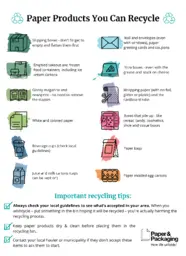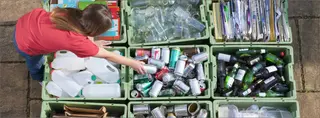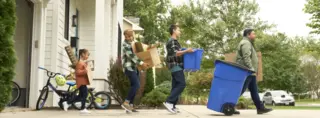
Few things are as enticing as the aroma of freshly baked pizzas arriving at your front door. Even more appealing: learning that pizza boxes are made to be recycled.
Many recycling centers are equipped to handle pizza boxes—even if they have grease stains and a little melted cheese. It can get confusing, for example, that in some areas city guidelines indicate to recycle them but county guidelines don’t. If you didn’t realize that, you’re not alone: Even though 73% of Americans have access to pizza box recycling, only 57% realize that pizza boxes can be recycled at all, survey data shows.
Where can pizza boxes be recycled?
The ultimate answer to whether pizza boxes are recyclable rests with local recyclers and what their guidelines say. Many programs do accept the boxes, whether they explicitly say so or not. If you live in the Northeast, chances are higher that after you empty and flatten them, you can recycle pizza boxes. In the South or Midwest, chances are lower.
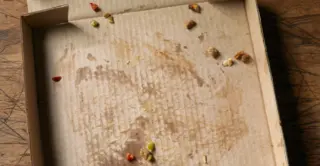
Can I recycle greasy pizza boxes?
It depends on your area. Check your local recycling center’s guidelines to see what boxes it will accept and how clean they have to be. Guidelines vary from community to community. If you don’t see pizza boxes on the list, you can encourage your community’s recycling center to start accepting them and to update their guidelines. Much of the time, pizza boxes are welcomed even if local guidelines don’t explicitly say so.
While some municipalities may not accept pizza boxes for recycling, on a technical level it’s unlikely to cause a problem. A study from a major paper producer confirmed that a little grease and cheese in an amount typically found on pizza boxes is not an issue for the recycling process. But consumers should empty the box first before recycling it (shake out those crumbs and remove any leftover crusts) and then flatten it.
In fact, the study found that unless more than 10% of a community’s recycling stream comes from pizza boxes, it won’t make a major difference. And getting to 10% would be near-impossible: Even if every pizza-eater in the country decided to recycle their pizza boxes at the same time, they would still total less than 3% of the entire amount of corrugated cardboard.
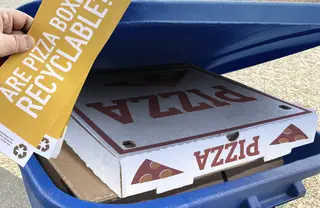
Are you one of the 73% of people in the United States who have access to pizza box recycling?
How are pizza boxes recycled?
Pizza boxes are recycled along with other paper packaging. Once paper and packaging are sorted at a recycling center, they are collapsed into bales and sent to a paper mill. There, it’s shredded and “pulped”—mixed with water so that the paper fibers break down and can be extracted. (Fun fact: At the pulping stage, cheese bits tend to solidify, making it easy to screen them out.) The fibers are dried and then sent to paper producers that use recycled material to make new paper products.
How many pizza boxes are used each year in the United States?
U.S. pizza-eaters go through about 3 billion pizza boxes a year. That amounts to 600,000 tons of cardboard material that can be recycled—a big opportunity for consumers and the environment.
How many times can pizza boxes be recycled?
Cardboard boxes like pizza boxes can be recycled up to seven times. By doing so, you’re maximizing the benefits of responsible forest management. Choosing paper products is one way to show support for healthy forests because U.S. paper producers work with private landowners to purposely grow and maintain them. In the U.S., about twice as much wood is grown for paper products as is used each year. And recycling makes further use of this renewable resource.
How do I get my pizza boxes ready for recycling?
Once you’ve double-checked that your local recycler lets you recycle pizza boxes, simply empty and flatten the boxes before you drop them in the recycling bin. Just remember: Empty, Flatten and Recycle (EFR)!
Read More: Can You Recycle This? What to Do with Paper, Cardboard & More


